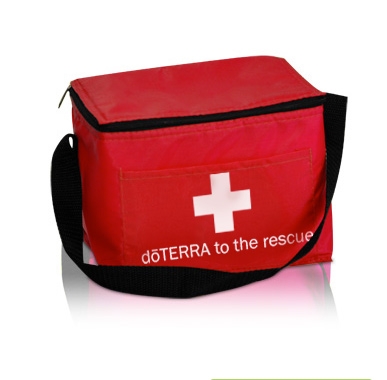
Essential oils for cuts are considered safe and efficacious replacements for conventional anti-bacterial preparations
Blending harmonious compounds increases the benefits of essential oil. This gives us a natural, effective means of avoiding infection in wounds.
Here, we will discuss a range of oils with disinfectant properties that you should have on hand as a safe remedy for minor burns, cuts, and scrapes.
Each essential oil in possess many types of distinct natural chemicals, that offer healing qualities. Blending oils makes the formula more effective against infections. The advantages of using essential oils instead of traditional chemicals, such as hydrogen peroxide, or other traditional antiseptic preparations is that they are potentially harmful.
Aroma oils have several advantages and benefits over common synthetic antiseptics. In contrast to many over-the-counter formulas, essential oils offer not just prevention of infection, but also cell-nourishing compounds, as well as non-toxicity.
Essential oils first aid box contents ideas
Many oils used in aromatherapy are proven to have antibacterial properties. To best treat conditions, it is necessary to use the correct essential oil in the correct amount. To illustrate, more potent varieties such as Oregano and Thyme might address a stubborn nail fungus,but it would be safer when diluted to protect soft tissue.
Here is a brief introduction to a few time-honored antiseptic essential oils for cuts and scratches, how to apply them, and dosages.
Tea Tree oil
Tea Tree is known globally for its aseptic effects. For hundreds of years, the leaves have been used to mend skin injuries and fight bacterial infestations by the Maori. Tea Tree is a must for every family’s natural essential oil first aid kit collection, as Tea Tree is a non-toxic and non-sensitizing, with a variety of positive qualities. In laboratory experiments, it has demonstrated exceptional antimicrobial effects in treatment of more bacteria and viruses than just about every other aromatic. Treating shallow lacerations and abrasions with Tea Tree immediately is one of the safest and most effective ways of preventing subsequent infections. A couple of drops applied to the skin before putting on a bandage accomplishes the same anti-bacterial action as over-the-counter chemicals. For use on young ones, Tea Tree essential oil can be diluted to a five percent concentration with Jojoba oil or Aloe gel for a benign, non-abrasive topical antimicrobial, suitable for skin conditions involving bacteria.
- A broad-spectrum healer, Lavender essential oil is the most widely used aromatherapy oil currently in use in every essential oil first aid kit. Capable of disinfecting, reducing inflammation, and reducing anxiety Lavender is helpful in the healing of skin irritations, abrasions, and burns. The calming fragrance disperses heat and inflammation and relieves pain, spasms, and anxiety. To burned skin, bug bites, and acne, apply Lavender straight to the skin multiple times a day. For broken skin, add a fifty-fifty blend of Lavender oil and Tea Tree in your essential oil first aid kit for the most highly regarded all around oil to disinfect, to reduce swelling, and to relieve pain.
- Oregano has been the subject of numerous scientific studies focused on the successful killing of anti-biotic resistant strains of bacteria. While traditional antibiotics try to kill all (even healthy) bacteria, aromatics infiltrate bacterial lipid-based cell walls and curtail their metabolism: no energy, no growth, no reproduction. Oregano is the all-time heavy-hitter of the first aid oils, and is notably vigorous. Putting it on undiluted is wise only in the most difficult cases, and even in those cases, with attention. Only with medical direction, Oregano oil can fight infections in entire body systems. Oregano essential oil can be effective against intestinal parasites and is indispensable with regard to bolstering the immune system.
- With a more agreeable scent and delicate effect on the dermal layer, Geranium is a multi-purpose option for frequent use. Harmonizing and balancing, Geranium oil has the capability of steadying feelings and hormonal ups and downs. The aforementioned Geranium essential oil strikes a balance between oily and dry states; Geranium oil helps to cleanse the skin while equilibrating balance, tone, and smoothness (experiment with your skin care preparations at levels between 12-36 drops per ounce of liquid of your base mixture). Moisturizing, aseptic, anti-inflammatory, astringent, and general tonic, Geranium oil has been traditionally indicated as support for symptoms for acne, dermatitis, eczema, and other weeping skin conditions.
- Lemon oil offers great benefits to a natural home-cleaning regimen. The oil is a gentle all-purpose antiseptic agent, plus it’s a wonderful surfactants, which makes clear its addition to the household cleaning solutions a must for your essential oil first aid kit. You can use lemon oil by itself at eight drops of oil per 8 ounces of hot water for an all-purpose mild antibacterial solution. For an even more serious formula for kitchen and wash-room uses, by including other antiseptic oils like Rosemary or Pine. In general, keep the total essential oil concentration the same.
Essential oil first aid kit
The antiseptic actions of essential oils for cuts are one of their most highly regarded. Leading aromatherapists claim that the most beneficial property of the oils is their anti-infectious nature. These are a few great means of beginning using their wide variety of medicinal effects for your family.
For more details about creating your own essential oil first aid kit – Click here or put your name and email address in the form on the top right hand side of this page and we will get back to you asap…..
Clickbank.com Ads


